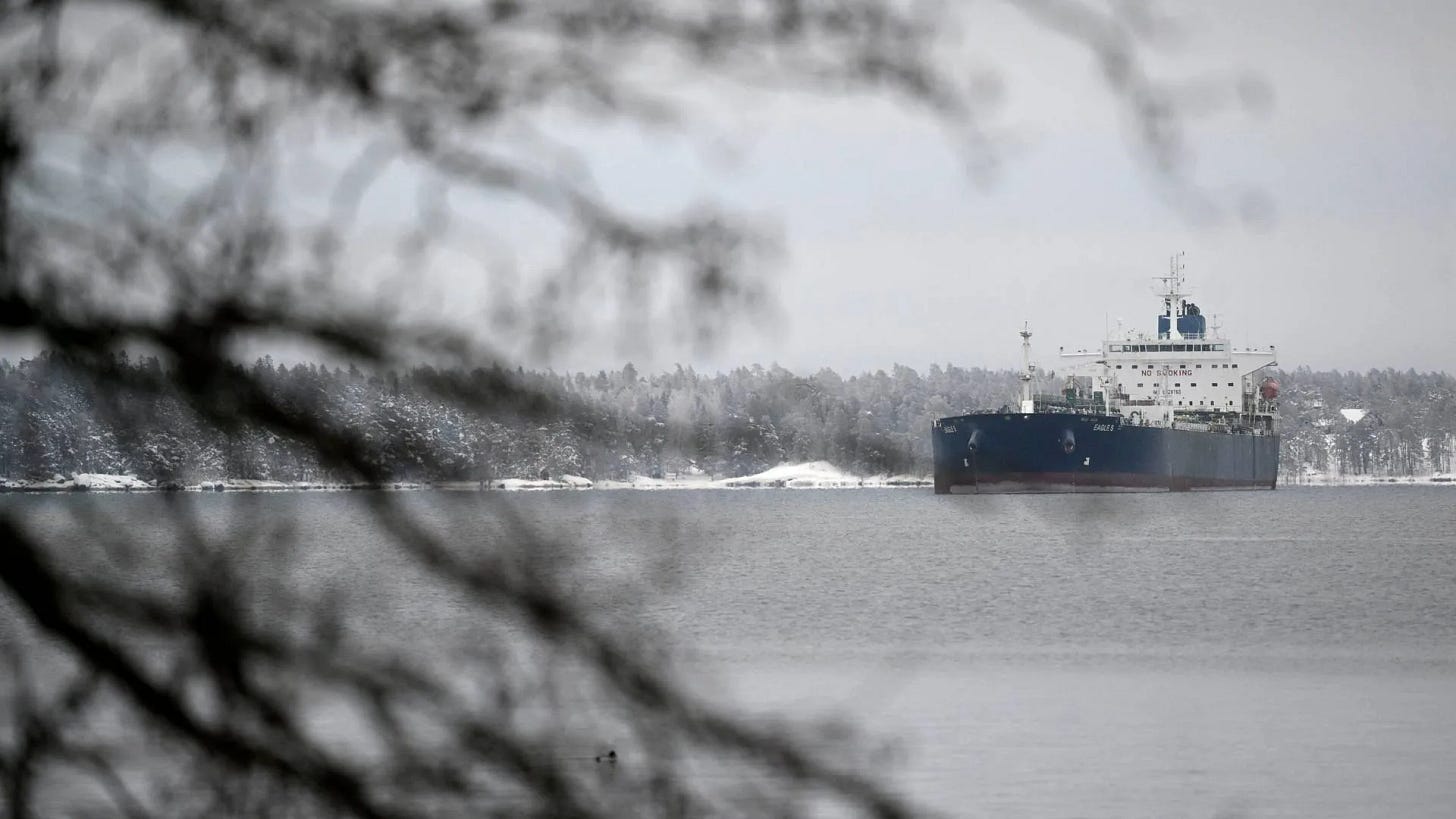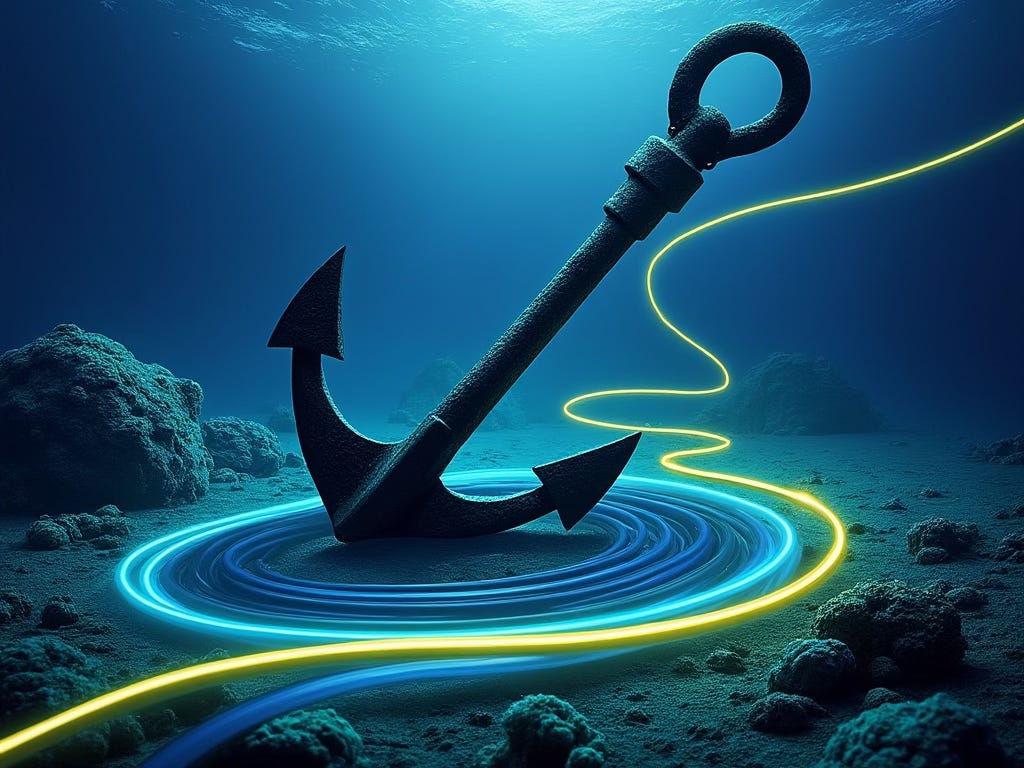Dropping Anchors and China's Curious Patents
It's past time to protect offshore turbines from aggressors
Anchors are dropped from ships thousands of time a day. And nobody worries about it.
But looking a little more closely some of those anchor drops - and two in particular recently that left a deep gouge in international relations - there’s clearly a reason to worry.
In December, NATO’s Annual Roundtable on Energy Security concluded that “hybrid attacks and sabotage remain the most pressing threats to critical undersea infrastructure in Europe.” This followed a report of 500 documented attacks on European cables last year.
And there’s another development that bears scrutiny: a patent application from researchers at Lishui University for a towed submarine cable cutting device and cable cutting method thereof.
We discuss this concerning issue in the latest Uptime Wind Energy Podcast.
Briefly, here’s how we got to this messy spot:
Data Cables Deliberately Severed
On November 17 and 18, 2024, the Chinese-flagged vessel Yi Peng 3 sailed through the Baltic Sea after departing the Russian port of Ust-Luga. Ships larger than 300 gross tons that travel internationally have AIS transponders that provide a precise location history of movement. Based on the transponder data, the Yi Peng 3 traveled over 100 miles with its anchor dragging along the sea floor.
How did the Yi Peng 3 crew not realize their anchor was not stowed? The noise and vibration on deck should have set off alarms with the crew. Plus, the vessel’s speed was slowed by the anchor for hours. Not minutes. Hours.
The damaged caused by the anchor was substantial. During the morning of November 17, the two BCS East-West Interlink data cables between Lithuania and Sweden were severed. The Yi Peng 3 then switched off its transponder for the next 7.5 hours and traveled to the Swedish Island of Öland.
Next stop was the C-Lion1 data cable between Finland and Germany. The Yi Peng 3 switched off its transponder again and lowered its anchor, severing the cable.
The Royal Danish Navy began following the ship and eventually the Yi Peng 3 dropped its anchor between the Swedish and Danish coasts. There it remained for several weeks; it was released after a cursory inspection.
This is second anchor-damaging action by a Chinese flagged vessel over the last 14 months. In October, 2023, the Newnew Polar Bear dragged its anchor off the coast of Finland, damaging a natural gas pipeline and communication cables. Authorities in Beijing admitted as much.
Adding salt to the wounds, several recent news investigations have found Chinese patents that describe anchor-like cable cutters. That’s just wonderful. The rationale for the patents is to aid in the removal unauthorized cables and infrastructure in Chinese waters. But in reality? The Chinese navy would quickly sink any vessel trying to lay cable in their territorial water.
2025: Why a New Patent for an Undersea Cable Cutter?
The status is currently pending for a patent CN111203499A for a ‘towed submarine cable cutting device and cable cutting method thereof.’
Gotta give the design credit: the simple device will certainly work. But for what legitimate applications?
Remote underwater vehicles that are already in use can do exactly what the new device can do. What is the impetus for the new device? To state the obvious, it looks like something designed to do exactly what the anchor-dragging ships did: to cut energy and communication lines. But purposefully, methodically, and without the “oops we did it again” pretense that it was an accident.

Offshore Wind at Risk
The oceans are filled with cables and pipelines. And they are highlighted on navigation charts. Based on recent history, it’s pretty easy to find and damage them. And that’s a big problem for offshore wind.
Offshore wind sites have a series of underwater cables. Inter-array cables connect turbines to an offshore electrical substation. Export cables run from the substations to the onshore substations.
Generally, there is only one cable running between the offshore and onshore substation for fixed bottom turbine farms. Those cables are buried under the sea bed. Inter-array cables for fixed bottom are also generally buried but some instances they might be set on the sea floor.
Floating wind turbines require cables that are suspended, which leaves large amounts of cable exposed around the turbines and the floating substation. Floating wind, typically, is also further from shore, which creates additional logistical problems.
As the world begins producing hundreds of Gigawatts of electricity from offshore wind, the vulnerability of that power to simple acts of sabotage is a valid concern.
Offshore Cable Protection Systems vs. Sabotage
The Carbon Trust’s Offshore Wind Accelerator recently updated best practice guidelines for offshore cable protection systems. The Cable Protection Systems Document is intended to offer protection from environmental and mechanical forces. Fortunately, those same protection measures also reduce the likelihood of simple sabotage.
In a world newly-aware of the vast amount of renewable energy that is generated from the oceans, which is only a fraction of the potential, it’s time to ask whether politicians and bankers are also waking up to the vulnerability of offshore wind. Firming up cable protection guidelines is a great step. Adding deterrents to stop bad actors - and bad anchors - is next.
We’re discussing this issue (again) in this week’s Uptime Podcast. I urge you to listen.
Stay charged!
Allen




